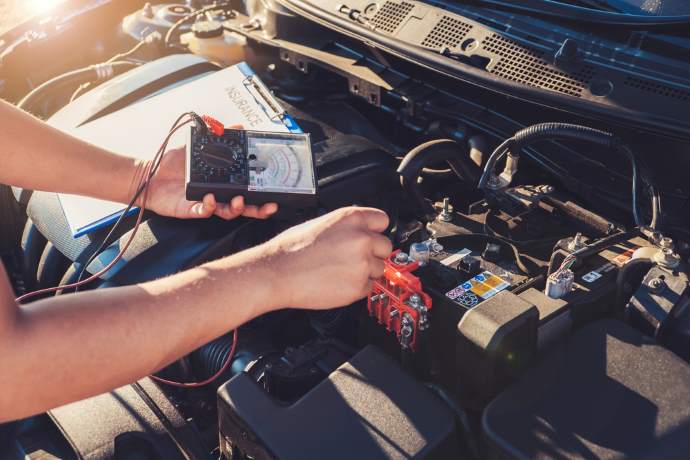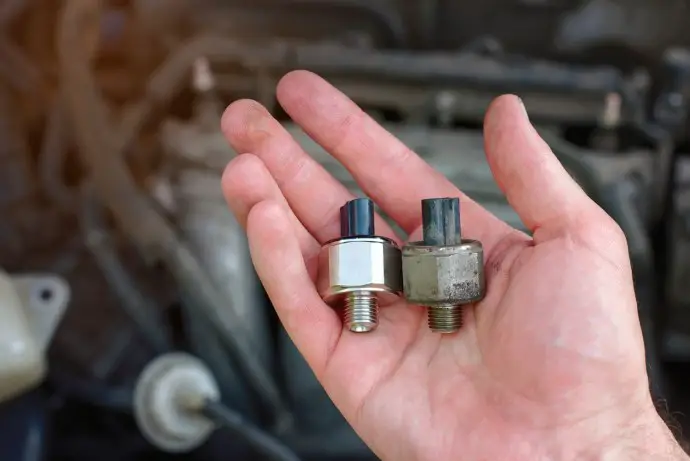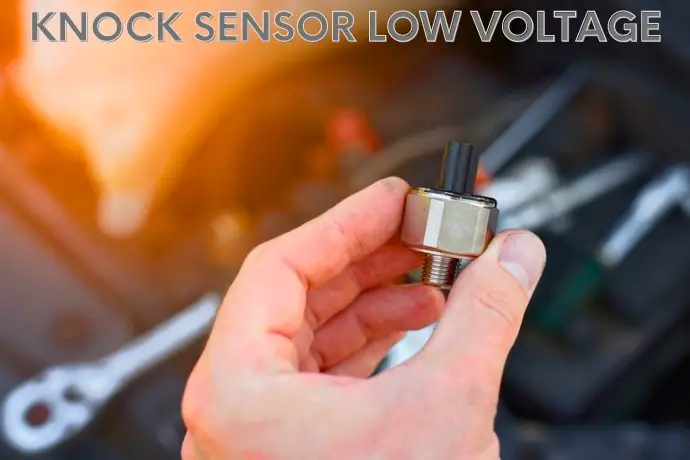The knock sensor detects the knocks and vibrations in the engine block and provides the information to the Powertrain Control Module (PCM).
According to this information, the PCM adjusts engine ignition timing. In this way, the PCM prevents engine from knocking.
However, sometimes the vehicle dashboard illuminates check engine light and if you scan the vehicle with an OBD-II scanner, you may see P0327, P0325, or P0332 error code.
The meaning of the error codes, knock sensor low voltage, its symptoms, and other necessary information I have discussed elaborately in the next section.
This section will explain how to fix the knock sensor low voltage issue.
The error codes primarily indicate knock sensor low voltage issue and the vehicle requires treatment.
The following problems cause the knock sensor low voltage:
- Faulty or damaged wiring connections
- Faulty knock sensor
- Issues with the PCM
To fix the knock sensor low voltage, follow the steps given below:
Step 1: Inspect the Wire Connections
Visually inspect the wires that connect the PCM and the knock sensor.
Generally, broken or loose wire connection causes the knock sensor low voltage issue.
So, carefully check for any damaged or loose connections.
If found replace the damaged wires.
Step 2: Testing the Knock Sensor

If the wiring has no issue, check the knock sensor.
Check the knock sensor physically for any damages or corrosion.
Then test the sensor to see if it is functioning correctly or not.
You can test the knock sensor by using a multimeter.
To test the sensor, start the engine and then record the voltage output from it.
Now, compare the result with the owner’s manual specified voltage output.
A faulty sensor typically provides lower voltage than normal voltage.
So, replace the knock sensor if you see the voltage is not as it should be.
Step 3: Inspect the Powertrain Control Module (PCM)
Sometimes issues with PCM cause the knock sensor low voltage issue.
But it is a rare case for properly maintained vehicles.
However, if the wiring and knock sensor both seem to be good, you must check the PCM.
You can also test the PCM through a multimeter.
Test PCM with a multimeter in this way:
- PCM Voltage Test: Set the multimeter to DC mode and connect to the battery terminals. The battery voltage should be 12V. But if there are any issues, the multimeter will show 10V or lower. In this case, you have to check loose connections and other issues.
- PCM Wiring Connections: Turn off the vehicle completely. Set the multimeter to “Ohms” mode and connect it to the PCM circuit board’s two points. If there is no broken wiring the multimeter shows a “0” reading. In other cases, replace the faulty wires.
- PCM Diode Test: Connect the multimeter to the PCM board and set it in diode test mode. If there are no issues, the meter shows “Open Circuit” reading.
By using the above methods, you can typically test the PCM.
Instead of the mentioned methods, some other professional ways are also available to test the PCM.
However, when it comes to the PCM issue, I personally recommend taking the vehicle to a nearby auto mechanic.
The mechanic can handle the issue in a better way.
Notes: Make sure your vehicle software is up to date. Not updated software can also cause the low voltage issue.
Step 4: Delete the Error Code
After resolving the voltage issue, clear the PCM’s stored error codes using a diagnostic tool.
Therefore, false warning lights won’t illuminate again in the future.
Watch the video given below to learn more about how to bypass knock sensor on Chevy trucks:
What are the Symptoms of Bad Knock Sensor?
A bad knock sensor will show the following symptoms:
- Check engine warning light
- Poor acceleration
- Engine misfire
- Reduce fuel efficiency
- Knocking or ping noise from the engine
- The engine not functioning properly
If you experience the symptoms, take an OBD-II scanner and read error codes.
For knock sensor low voltage issue you will see the following codes on the scanner display:
- P0327: A most common code for knock sensor with low voltage. It’s a knock sensor low input (Bank 1). That means the readings from bank 1 knock sensor circuit are low and there is any issue with the electrical circuit.
- P0325: This code indicates malfunction in the sensor circuit (Bank 1).
- P0332: This code indicates that the sensor has low voltage issue (Sensor 2, Bank 2).
What Does Knock Sensor Low Input Mean?

Knock sensor low input means the sensor detects unusual vibration in the engine.
Loose electrical connections usually cause the knock sensor low voltage issue.
However, sometimes issues in the knock sensor also cause the low voltage issue.
Knock sensor low voltage issue affects the vehicle performance and fuel economy.
FAQs
How many volts does a knock sensor need?
It depends on the vehicle types and models.
However, when the knock sensor detects engine knock, it creates a small AC voltage fluctuation on top of the bias voltage.
Depending on the severity of the knock, this fluctuation ranges from 0 to 4.5 volts.
Can a knock sensor cause low power?
Yes, faulty knock sensor causes low power in the engine.
The knock sensor detects the vibration and combustion in the engine.
Then it sends the signal to the PCM and the PCM adjusts ignition timing.
When the PCM receives abnormal signals from the sensor, it cannot set the ignition timing properly.
As a result, the engine power will be reduced.
Is it OK to drive with a bad knock sensor?
You should not drive with a bad knock sensor.
Because the knock sensor is an important component and it affect the engine performance directly.
If you drive with a bad knock sensor, it damages the engine and sometimes may require a costly repair.
Can you fix the knock sensor yourself?
Yes, you can fix the knock sensor if the problem is caused by faulty electrical connections or the sensor itself.
But if the knock sensor issues are caused by faulty PCM, you should hire a professional mechanic.
As the PCM is a complex component, hiring a professional makes you risk-free.
Read More:

